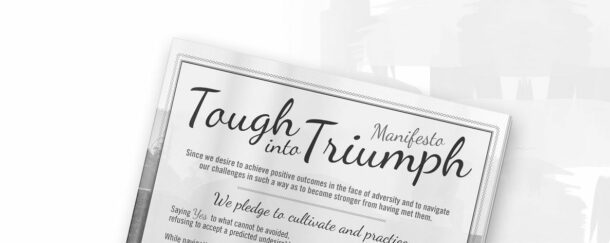People would often say to me, “This isn’t the way it’s supposed to be, children dying before their parents.” They said it when my thirty-one-year-old son, Kenneth, died of AIDS and again, seven years later, when my forty-two-year-old daughter, Corinne, died of breast cancer. When Corinne died, I got a phone call from my cousin, who had lost her own daughter in a car accident twenty years before. “This shouldn’t be happening to you,” she said, in an effort to comfort me. When I asked whom it should be happening to, she said, “Someone who hasn’t already lost a child.”
But I prefer not to think this way. When I am in that place of questioning the circumstances of my own life, I picture the gravestones in the historical cemeteries my history-buff father took us to visit as children. We kids would run from gravestone to gravestone, doing the math and discovering children our own ages or younger buried there. I remind myself that it’s only in recent generations and in a country as fortunate as our own that parents can expect to raise all their children and to predecease them.
So I set out to write about my experiences as a mother who has lost two of her three adult children to horrific diseases. I voluntarily reentered those years of anxiety, trauma, and hope to better under- stand what transpired there. I realized that those of us who survived have been profoundly changed, and so I have written partly for my own healing and partly to share with others the learning and strength I discovered. Many people did not understand my spending so much time writing about this, especially my husband, Richard, whose style of grieving was entirely different. Rich and I finally came to an under- standing several years into this project.
Rich and I are both behavioral health professionals. We share a conviction that many mental health problems are caused by a lack of connection to people’s spiritual selves. In our work and for our own personal development, we use the community- building tools of dance, song, and story. In the jargon of our professions, this is called using the arts for individual and social transformation. For ten years we founded and co-directed a behavioral health care clinic called Iatreia Institute for the Healing Arts. This was the name of the clinic from 1987-1997 until we were purchased by Corphealth. Then it became Iatreia, Inc. You’d think that the experience of our professional careers and the synchronicity of our shared beliefs would have given us some special insight into each other’s grief. Not so.
Five summers ago, Rich sent me off to participate in a writers’ workshop with the comment, “I hope someday you will find some- thing more pleasant to write about.” When I returned from the writers’ workshop in Iowa City, held a couple of weeks after the town had suffered a significant flood, I brought back two empty sandbags, like the thousands of bags of sand stacked as barricades against the rising waters. My empty sandbags had been decorated and made into handbags by artists in the com- munity and sold to raise money to help the local Habitat for Humanity fund the cleanup efforts. At home I laid out my decorated sandbags alongside a folder of my writing. “My writings are my sandbags,” I told Rich. “We have to make art out of what happens to us, or at least some- thing useful, and we don’t get to pick what that is.”
People have asked me how I’ve survived all the tragedy and loss in my life. Perhaps I’ve written the stories of my journeys with my children, other family members, and my best friend to answer that question for myself. Witnessing how hard both my children fought to stay alive and all that they were willing to endure to gain more life has defined my grieving process. I never wanted to dishonor them by wasting one moment of whatever precious life I am given.
Like a prospector searching for gold, with the help of my journal, I have panned and sifted through these experiences—of birth, death, and the places in between. I have shaken the sieve in such a way as to uncover, among the dirt, pebbles, and debris, the valuable shiny elements in these stories. This sifting and sorting has been, like the experiences themselves, tough at times, but also enlightening. I’ve come to appreciate the many ways that people confront illness, diagnoses, treatment decisions, and, yes, even death, and the many faces and masks of grief. And ultimately, I’ve come to see the demands made on me as a mother as requiring me to become a warrior mother. In our lifelong mother roles, whether our children are sick or well, young or old, like warriors, we engage wholeheartedly in a cause, and like spiritual warriors, we are asked to use our compassion and wisdom to help our children and ourselves grow and thrive through whatever life sends our way.
(from Warrior Mother – Fierce Love, Unbearable Loss, and the Rituals that Heal by Sheila K. Collins PhD.)

